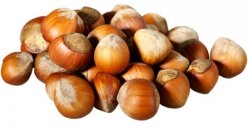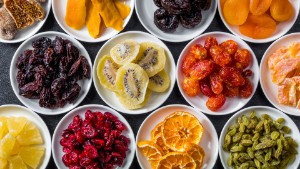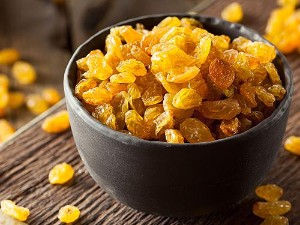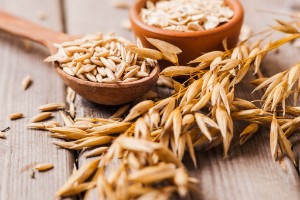Which nuts are good for the liver — an overview of 5 popular types
 Numerous studies indicate the undoubted benefits of nuts for various organs and body systems. Nuts contain omega-3 unsaturated fatty acids, as well as trace elements such as iron, zinc, magnesium, selenium, and manganese. For the most part, all this is important for the normal functioning of the gastrointestinal tract.
Numerous studies indicate the undoubted benefits of nuts for various organs and body systems. Nuts contain omega-3 unsaturated fatty acids, as well as trace elements such as iron, zinc, magnesium, selenium, and manganese. For the most part, all this is important for the normal functioning of the gastrointestinal tract.
And how does eating nuts affect liver function? Which types are useful and which ones can be harmful? Is it possible to eat them with pre-existing liver diseases? All the answers are below.
Content
Effects on liver function
 Almost all varieties of nuts have a positive effect on the functioning of the digestive tract, including the liver.
Almost all varieties of nuts have a positive effect on the functioning of the digestive tract, including the liver.
The unsaturated fatty acids contained in them take part in a wide range of intercellular metabolic processes, but they are not deposited in subcutaneous fat.
And the iron, zinc, magnesium, tannins contained in nuts have a positive effect on biochemical composition of blood . And the condition of the liver directly depends on it, since its main function is to regulate that very composition by removing and neutralizing toxins.
Overview of 5 popular species
And now we will discuss the effect on the digestive tract of specific varieties of nuts.
1. Walnuts
Doctors recommend using them fresh without pre-drying, that is, while maintaining natural moisture. In this case, the entire spectrum of micronutrients is preserved in the kernels (during drying, for example, some amino acids disappear, tannic components break down into derived elements).
Walnuts also have the following benefits:

- Prevent the oxidation of liver cells (and their further destruction);
- Reduce the overall load on the liver (due to normalization of the biochemical composition of the blood);
- Lower cholesterol and cleanse blood vessels ;
- Accelerate the outflow of bile;
- Improve the functioning of the stomach and pancreas.
Walnuts can only harm by stimulating inflammatory processes. But this happens only if you consume more than 60-80 grams of purified kernels daily, and regularly. Accordingly, it is better not to exceed the specified limit , and at the same time give preference to those nuts that have not been subjected to thermal drying.
Don't forget that walnuts refers to high-calorie foods . Accordingly, when following diets, they have to be completely abandoned. The same is true for obesity.
2. Cedar trees
Pine nuts are rich in essential amino acids, which are used in the regeneration process, including liver cells.
 They also contain antioxidants that slow down the oxidation of damaged cells (but these substances disappear during frying).
They also contain antioxidants that slow down the oxidation of damaged cells (but these substances disappear during frying).
Due to the presence of a large amount of proteins in the composition, pine nuts are almost always included in the diet of sports nutrition.
Their regular use also prevents the development of cirrhosis of the liver, the formation of gallstones (since pine nuts have a high content of potassium, which regulates water-salt metabolism).
Pine nuts are not recommended to be consumed in their pure form. It is better to use them as an additional ingredient in the preparation of various kinds of salads, casseroles.
3. Almonds
 Almonds are one of the richest foods in vitamin E, which is a powerful antioxidant. Its high concentration in the body prevents the development of hepatosis of liver tissue, indirectly cleanses the blood composition
, accelerates the breakdown of low-density cholesterol.
Almonds are one of the richest foods in vitamin E, which is a powerful antioxidant. Its high concentration in the body prevents the development of hepatosis of liver tissue, indirectly cleanses the blood composition
, accelerates the breakdown of low-density cholesterol.
Almonds also accelerate the outflow of bile, it is often used to "clean" the liver.
But with all this, this type of nut is also very high in calories (about 650 kcal per 100 grams of peeled kernels). Therefore, excessive use of it can provoke inflammation of liver tissues . With a tendency to cholelithiasis, it should also be abandoned.
It is recommended to use almonds as an aromatic additive in the preparation of salads, desserts, various kinds of creams and sauces. In its pure form, it is quite bitter. It is better to eat in small portions, literally 2-3 nuts each.
4. Peanut
Peanuts are considered the most "harmful" among all varieties of nuts. Of its positive qualities, it is worth highlighting only the high content of proteins, as well as vitamin E, B-groups.
 Peanuts are harmful because of the following factors:
Peanuts are harmful because of the following factors:
- They are high in calories (about 550 kcal per 100 grams), and everything fatty "loads" the liver;
- Very often causes an allergic reaction;
- Increases the concentration of harmful cholesterol.
Peanuts also significantly increases the outflow of bile, which is why heartburn is often felt after eating it.
Peanuts should be consumed fried – in this case, the risk of developing allergies is reduced. It is better not to use salt. It is recommended not to eat more than 100 grams of peanuts in one day. If you follow a gentle diet, peanuts should be abandoned altogether.
5. Hazelnut
Hazelnuts are rich in calcium, phosphorus, vitamin E, sodium, zinc. Accordingly, it:

- Prevents the destruction of liver cells;
- Prevents the exacerbation of cirrhosis (in the initial stage, with exacerbation, hazelnuts are contraindicated);
- Normalizes the biochemical composition of the blood , as well as concentration red blood cells (due to the presence of iron in the composition).
Like all other nuts, hazelnuts are very high in calories. Almost 60% of its weight is fatty acids. There is cholesterol in it, but much less than in the same peanuts.
Hazelnuts are recommended to be consumed in dried form, without frying. In raw – it tastes very bitter and cloying. Up to 75 grams of hazelnuts should be consumed daily.
Useful recipes based on them
In folk medicine, there are a lot of recipes for strengthening the liver and normalizing its functions, where nuts are also used. The most popular recipes are prepared quite simply:
- Alcoholic tincture of walnut. For its preparation, green nuts are also used directly with green peel. It will take about 15-20 pieces. They are placed in a glass container, filled with 0.5 liters of strong alcohol (preferably alcohol). Insist for 2 weeks in a dark, cool place, shaking thoroughly every 2 days. After that, strain, store the finished tincture in the refrigerator. Take 1 teaspoon 2 times a day with meals. This remedy protects the bile ducts from the formation of stones in them, and at the same time slows down the destruction of liver cells. This tincture is especially useful for high cholesterol. The course of admission is 1 month, followed by a break of 2-3 weeks.
- Amosov paste. It is believed that this remedy comprehensively strengthens the liver, and at the same time strengthens the immune system, prevents the development of diseases of the cardiovascular system. To prepare it, mix 1 cup of walnut kernels, 250 grams of dried apricots, 250 grams of prunes, 250 grams of figs, 1 lemon (together with the peel) and 250 grams of honey. All this is ground with a blender or meat grinder. Take 1 tablespoon 3 times a day until the end of the prepared mixture. Step-by-step recipe for Amosov pasta with PHOTOS can be found here →
- Decoction of walnut partitions. Those partitions will require 50 grams. They are poured with 1 liter of water, brought to a boil over low heat and kept until only 0.5 liters of liquid remain. Next, strain the broth through several layers of gauze. Take 2 teaspoons 1 time a day on an empty stomach. This remedy eliminates liver inflammation well (which are accompanied by acute pain).
Is it possible to eat them for diseases?
 In most cases, nuts for chronic liver diseases are strictly contraindicated
.
In most cases, nuts for chronic liver diseases are strictly contraindicated
.
This is due to the high content of fat in them, for the breakdown of which the liver is responsible. This is relevant for cirrhosis and fatty liver hepatosis.
With cirrhosis of the initial stage or fibrous hepatosis, nuts can be used in small quantities. You should consult your doctor and nutritionist in more detail on this matter.
Interesting video
And now we invite you to familiarize yourself with the video:
;
Conclusion
In total, nuts are rich in minerals, vitamins, metals, antioxidants, so they are very useful for the hormones of the digestive tract. But due to the high fat content, when prescribing various kinds of diets aimed at normalizing liver functions, they have to be completely abandoned.





